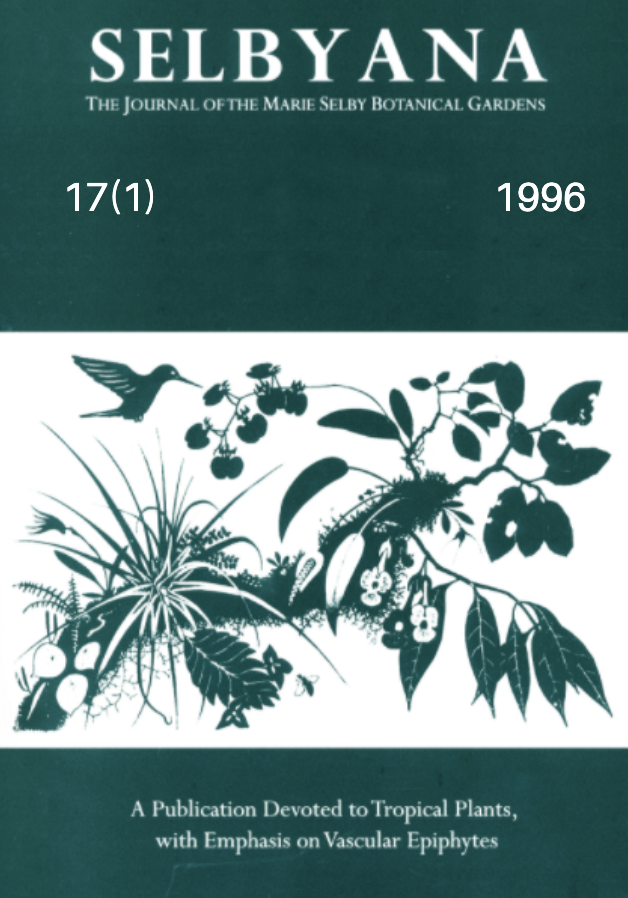Abstract
Approximately 100 species of epiphytes of the Orchidaceae, Bromeliaceae, Cactaceae, Araceae, Piperaceae and Polypodiaceae occupy the canopy and tree trunks of the various tropical forests of the Yucatán Peninsula. We established the geographic distributions of most of these epiphytes, and at the same time assigned them to different habitats: tall and medium-statured semi-evergreen and subdeciduous forest, and low-statured deciduous and seasonally inundated forests, as well as mangroves. The number of epiphyte species vary between forests. The low-statured inundated forests, unique to the Peninsula and the least disturbed, are home to about 56% of the epiphyte species, while the tall semi-evergreen forest hosts approximately 78%. Perturbations of the tropical forests are widespread but patchy. For example, in southern Quintana Roo between 1975 and 1990, the increase (hectares) in agriculture and cattle ranching was 80% whereas in secondary vegetation it was 48%. With > 50 % of the original forest gone, the Peninsula's eleven protected natural areas occupying 10% of the surface area, will give some protection to the epiphytes.
Open Access and Copyright Notice
Selbyana is committed to real and immediate open access for academic work. All of Selbyana's articles and reviews are free to access immediately upon publication. There are no author charges (APCs) prior to publication, and no charges for readers to download articles and reviews for their own scholarly use. To facilitate this, Selbyana depends on the financial backing of the Marie Selby Botanical Gardens, the hard work and dedication of its editorial team and advisory board, and the continuing support of its network of peer reviewers and partner institutions.
Authors are free to choose which open license they would like to use for their work. Our default license is the Creative Commons Attribution-NonCommercial 4.0 (CC BY-NC 4.0). While Selbyana’s articles can be copied by anyone for noncommercial purposes if proper credit is given, all materials are published under an open-access license with authors retaining full and permanent ownership of their work. The author grants Selbyana a perpetual, non-exclusive right to publish the work and to include it in other aggregations and indexes to achieve broader impact and visibility.
Authors are responsible for and required to ascertain that they are in possession of image rights for any and all photographs, illustrations, and figures included in their work or to obtain publication or reproduction rights from the rights holders. Contents of the journal will be registered with the Directory of Open Access Journals and similar repositories. Authors are encouraged to store their work elsewhere, for instance in institutional repositories or personal websites, including commercial sites such as academia.edu, to increase circulation (see The Effects of Open Access).
